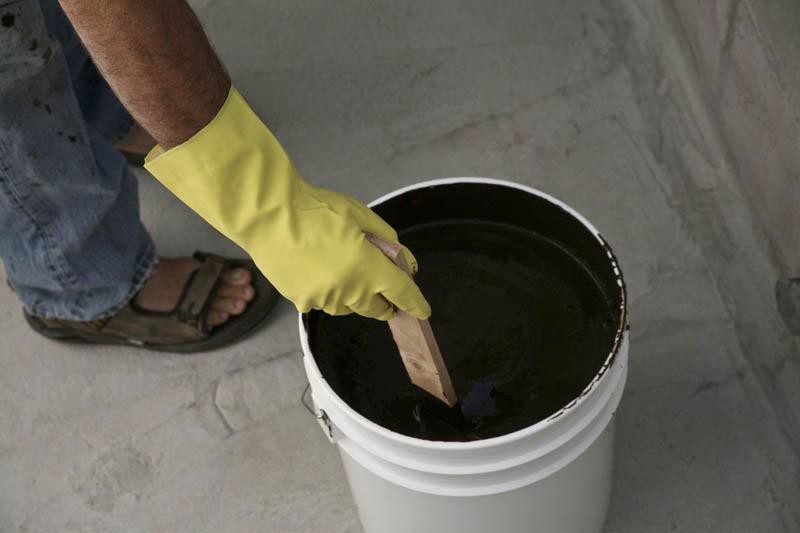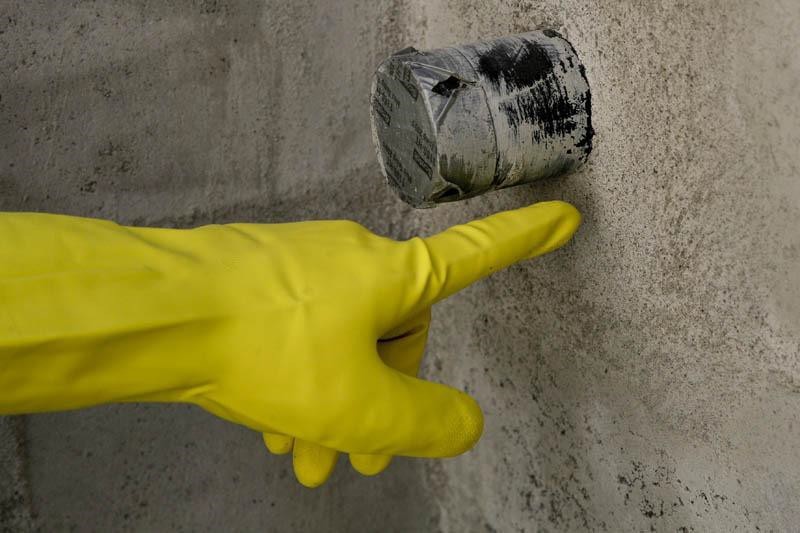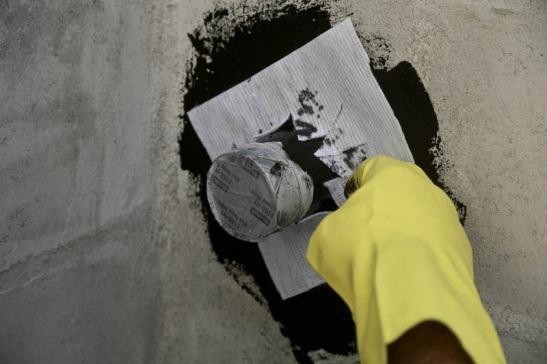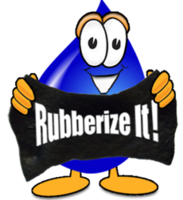How to apply Reinforcement Fabric Using Dura-Rubber
It is important to keep "Dura-Rubber" completely mixed at all times. This is really easy to do with a wooden stick.

The first step was to reinforce all the corners, the bottom drain, and areas where pipes enter the tank. This product shrinks very slightly as it cures, and reinforcing these areas prevents the product from separating at those points as it dries.
Below is the the woven polyester fabric used to reinforce the corners and edges. The fabric is also used to reinforce any thin cracks one may have in the walls of the koi pond.









After the TPR's and bottom drain were finished, we applied fabric to the corners. This is done in the same manner as the TPR's in that a layer of "Dura-Rubber" is applied first, and then a section of fabric is applied with a second coat of "Dura-Rubber". The strips of fabric do not need to be in one continuous length and can be applied in smaller sections.
I think it is best to reinforce the vertical sections first and then do the horizontal areas. Doing the vertical sections first provides more walking around room on the floor.


This is a close-up of the painted on polyester fabric. Something I noticed is that the fabric sometimes separates from the first painted on layer. This occurs in tiny sections of about 1/4 to 1/2 inch in size. Those are areas where I did not apply enough "Dura-Rubber" to the fabric. By pressing these raised sections with my thumb I was able to get them to stick very well to the painted layer underneath.

Now for the walls! This is best to use a paint roller. You can also spry it on for larger projects. Be sure you use one with a heavy thick nap, as the soft fluffy paint rollers will not hold up very well. One thing I noticed is that using a roller to apply "Dura-Rubber" on a concrete block wall, while a very fast way to apply "Dura-Rubber", there are sometimes deep nooks and crannies that do not get filled in. I only found 3- 4 in the quarantine tank, This not such a big deal. I will go in later and paint these spots over with a brush

Drips can be smoothed out even after about 5 minutes. Any dripped "Dura-Rubber" needs to be smoothed out because leaving them alone will cause a differential in dry time between the thinner layers and the thicker drips

Here is the finished quarantine tank. Well actually, this is just the first coat! In the very last photo below, you will notice a few curved ripples on the bottom.


Those are not caused by "Dura-Rubber” but are the actual concrete surface of the floor
